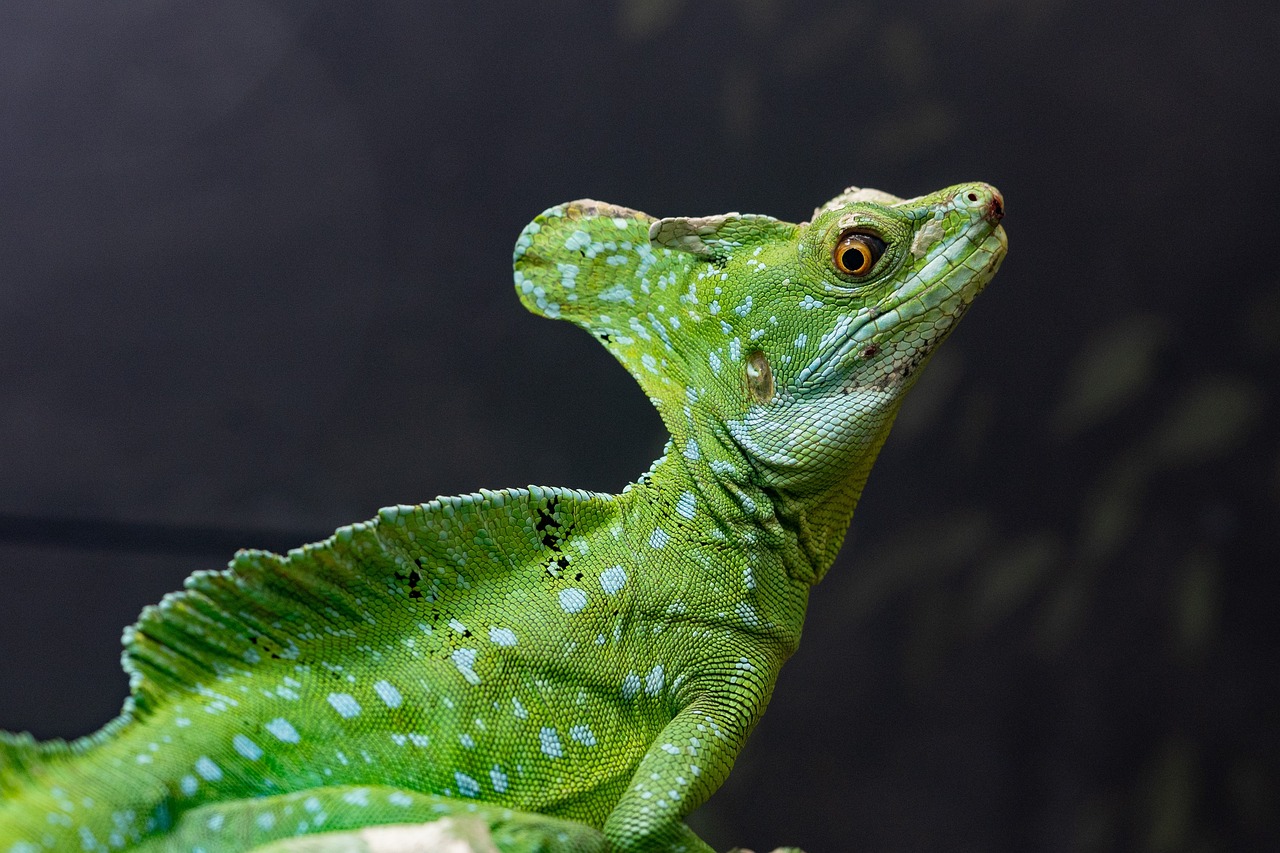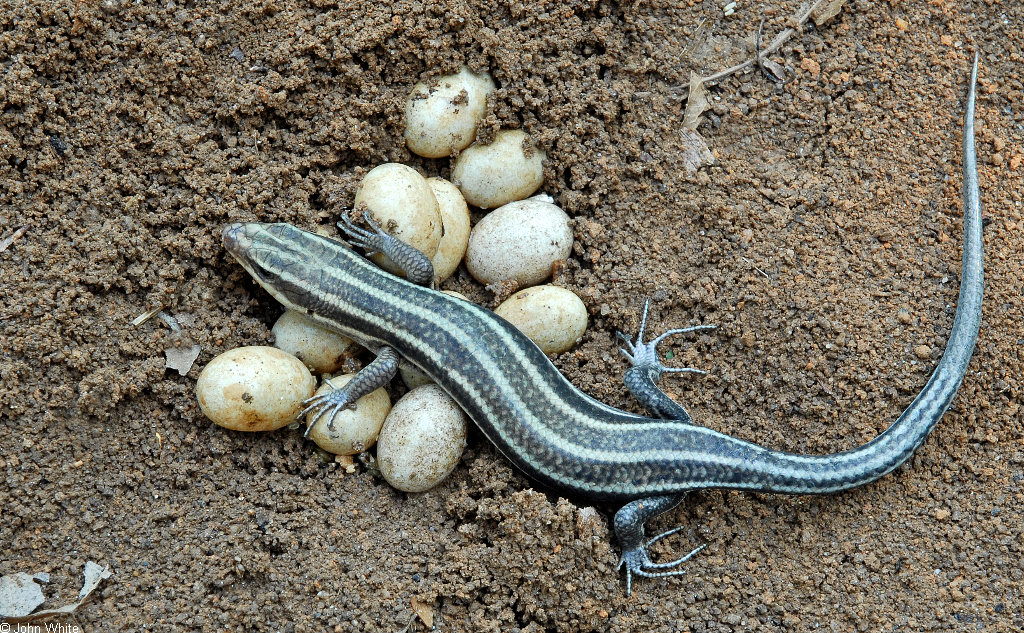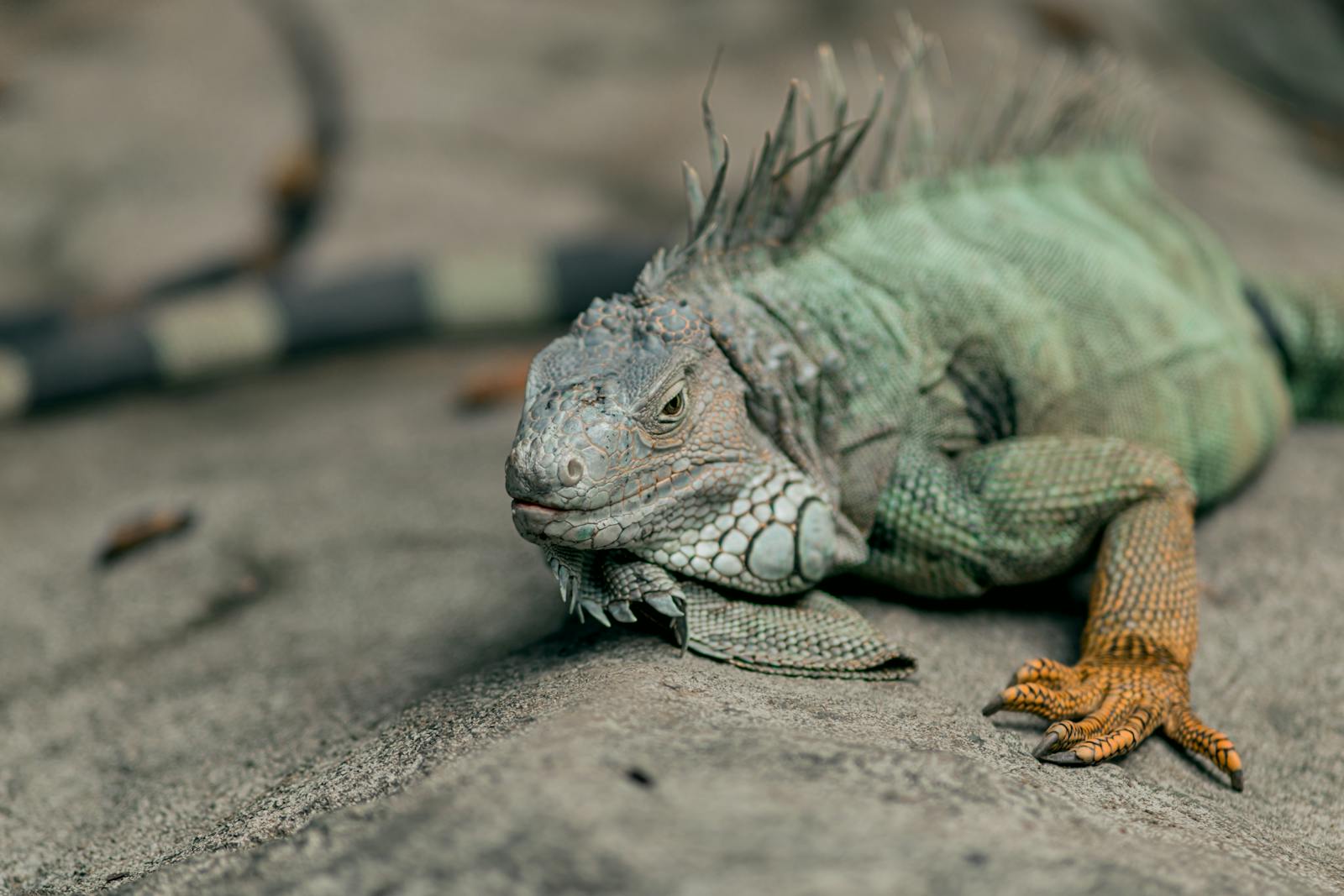In the vast tapestry of Earth’s biodiversity, few creatures exemplify nature’s artistic flair quite like the world’s most beautiful lizards. These remarkable reptiles, with their kaleidoscopic patterns, vibrant colorations, and fascinating adaptations, serve as living canvases that showcase evolution’s creative genius. From tropical rainforests to arid deserts, lizards have diversified into countless forms, many boasting appearances so striking they seem almost mythical. Their beauty isn’t merely aesthetic—it often serves crucial ecological functions, from camouflage to mate attraction to predator deterrence. Join us on a journey through the world of these scaled wonders as we explore nature’s most impressive living art pieces in the form of beautiful lizards.
The Resplendent Green Basilisk: Jesus Lizard

The Green Basilisk (Basiliscus plumifrons) stuns with its emerald-green body adorned with bright blue spots and a dramatic crest that runs from head to tail. Native to the rainforests of Central America, this lizard earned its “Jesus Lizard” nickname from its remarkable ability to run across water surfaces using specialized scales on its feet that create air pockets. The males sport three distinct crests—on the head, back, and tail—creating a prehistoric silhouette that seems straight from the dinosaur era. Beyond their striking appearance, these lizards display fascinating behavior, including territorial displays where males bob their heads vigorously and extend their dewlaps to signal dominance or attract mates.
Electric Blue Day Gecko: Living Sapphire
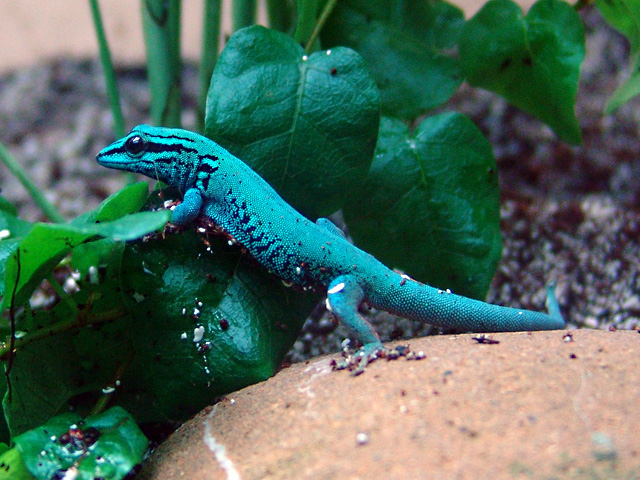
The Electric Blue Day Gecko (Lygodactylus williamsi) presents perhaps one of the most intensely colored bodies in the reptile world, with males displaying a cobalt blue that seems to glow against their natural habitat in Tanzania’s Kimboza Forest. Despite measuring only 3-4 inches in length, these diminutive lizards command attention with their vibrant coloration, which contrasts dramatically with their orange-red throat patches. Tragically, their beauty has become their curse, as the pet trade has driven this species to critically endangered status, with their native range limited to just a few square kilometers of forest. Their specialized toe pads, covered in microscopic hairs called setae, allow them to scale vertical surfaces and even traverse glass or smooth leaves with remarkable agility.
Satanic Leaf-tailed Gecko: Master of Disguise

Despite its ominous name, the Satanic Leaf-tailed Gecko (Uroplatus phantasticus) represents one of nature’s most extraordinary examples of camouflage, resembling a decaying leaf down to the finest details. Endemic to Madagascar, this remarkable gecko features jagged edges, leaf-vein patterns, and even what appear to be insect bite marks or spots of decay to perfect its disguise. Their coloration ranges from mottled browns to vibrant oranges and purples, allowing them to disappear seamlessly against Madagascar’s diverse forest floor detritus. When threatened, these geckos employ a dramatic defensive display by opening their mouths wide to reveal a bright red interior, hissing loudly, and raising their tails—behavior that likely contributed to their devilish name.
Chinese Water Dragon: Eastern Elegance

The Chinese Water Dragon (Physignathus cocincinus) combines graceful lines with a stunning emerald green body and accents of turquoise and orange-red that create a visual symphony of color. Their long, powerful tails make up roughly two-thirds of their total length and serve dual purposes as swimming aids and defensive weapons. Males develop more prominent features as they mature, including larger crests, dewlaps, and more intense coloration, particularly around the throat which can display rich crimson hues during breeding season. These semi-aquatic lizards inhabit the forests of Southeast Asia, where they often bask on branches overhanging water, ready to dive in at the first sign of danger—they can remain submerged for up to 25 minutes, a remarkable adaptation that complements their stunning appearance.
Panther Chameleon: Nature’s Color Palette

The Panther Chameleon (Furcifer pardalis) from Madagascar stands as perhaps the most colorful reptile on Earth, with regional variants (locales) displaying distinct color patterns ranging from vibrant blues and greens to striking reds and oranges. Unlike many animals that permanently wear their colors, these chameleons can transform their appearance rapidly, shifting hues in response to temperature, light, mood, and when communicating with other chameleons. The males, particularly from the Ambilobe and Nosy Be regions, display the most spectacular color combinations, with some individuals capable of presenting nearly every color in the rainbow simultaneously. Their independently moving turret-like eyes, specialized projectile tongues, and prehensile tails complete the package, making them living masterpieces of evolutionary design.
Tokay Gecko: Spotted Splendor

The Tokay Gecko (Gekko gecko) combines size with spectacular patterning, displaying a bluish-gray body adorned with striking orange or red spots that seem to glow against their base color. Native to Southeast Asia, these vociferous lizards are named for their distinctive territorial call—a loud “TO-KAY” that resonates through their forest habitats. Their large size (up to 15 inches) and powerful jaws make them formidable predators, while their adhesive toe pads allow them to scale vertical surfaces with ease, even walking upside-down across ceilings. Perhaps most impressive is their ability to regenerate their tails when lost, with the new tail often displaying slightly different coloration that adds to their unique patterning
Thorny Devil: Desert Masterpiece
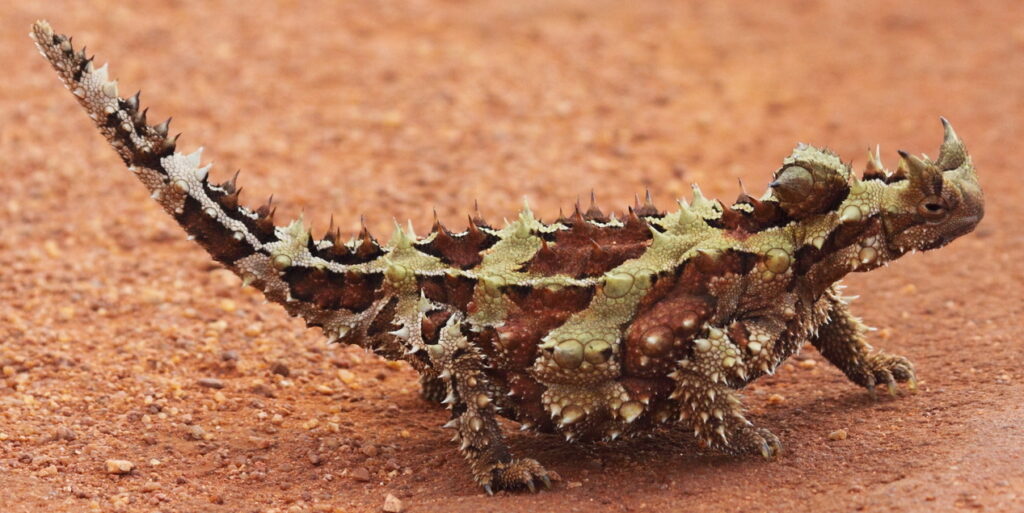
The Thorny Devil (Moloch horridus) transforms the harsh Australian desert into its artistic canvas, with a body covered in conical spines and an extraordinary ability to change color from pale beige to rich reds and browns depending on temperature and mood. This bizarre-looking lizard has evolved specialized scales that form micro-channels capable of drawing water from any part of their body toward their mouth through capillary action—allowing them to collect morning dew or even moisture from sand. Their deliberate, rocking gait creates an illusion of a moving leaf rather than a lizard, helping them avoid detection by predators. Perhaps most remarkably, they possess a false head on their neck—a knobby protuberance that they present to potential threats while tucking their real head safely between their forelegs.
Crested Gecko: Prehistoric Elegance

The Crested Gecko (Correlophus ciliatus) combines prehistoric appearance with delicate beauty, sporting distinctive eye-lash-like projections above their eyes and a fringed crest running from head to tail. Once thought extinct until rediscovered in 1994 on New Caledonia, these geckos display remarkable color variations including stunning dalmatian spots, tiger stripes, and flame patterns in shades ranging from cream and yellow to orange and deep red. Their paddle-shaped toe pads, covered with microscopic hairs, allow them to climb virtually any surface, while their prehensile tails (though often naturally dropped and never regenerated) serve as a fifth limb when navigating their forest habitats. Their expressive faces, with large forward-facing eyes that lack eyelids, give them an almost emotive quality that has contributed to their popularity both in photography and as pets.
Sungazer Lizard: Armored Artistry

The Sungazer Lizard (Smaug giganteus), also known as the Giant Girdled Lizard, transforms defensive adaptation into artistic expression with its heavily armored body covered in spiky scales that glisten in the South African sun. These prehistoric-looking lizards earn their name from their habit of basking with their heads pointed upward, as if gazing at the sun, while their tail spines create a formidable defensive perimeter. Their earthy coloration, ranging from rich browns to sandy yellows, allows them to blend perfectly with their grassland habitat while still maintaining an imposing presence. When threatened, they display remarkable defensive behaviors, including inflating their bodies to appear larger, opening their mouths wide to expose bright yellow-orange mucous membranes, and potentially delivering a powerful bite if cornered.
Flying Dragon: Aerial Elegance
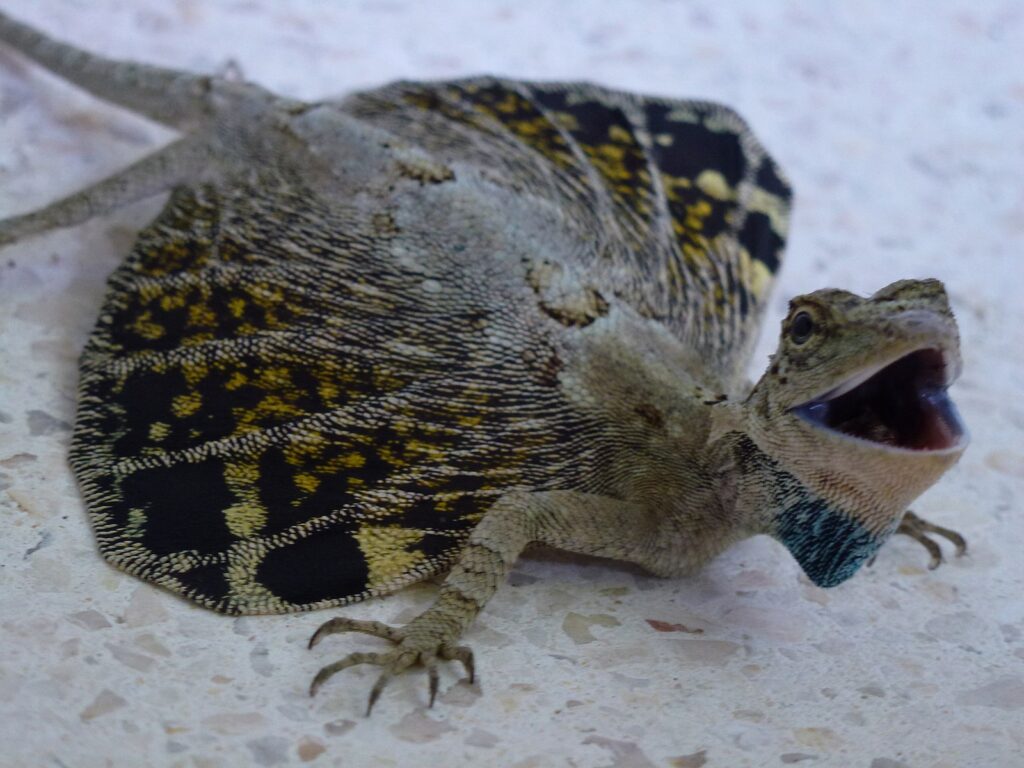
The Flying Dragon (Draco volans) elevates lizard beauty to new heights—literally—with specialized elongated ribs that extend to support membranous wings, allowing them to glide up to 30 feet between trees in their Southeast Asian forest homes. When not in flight, these wings fold neatly against their bodies, but when deployed, they reveal stunning patterns and colors ranging from bright oranges and reds to blues and greens, often decorated with intricate spots or stripes. Males possess colorful dewlaps (throat fans) that they extend during territorial displays or courtship, adding splashes of yellow, orange, or blue to their already impressive appearance. Despite their dragon-like name and abilities, these lizards are diminutive marvels, typically measuring only 8-10 inches long including their tail, making their aerial feats even more impressive.
Blue-tongued Skink: Hidden Surprise
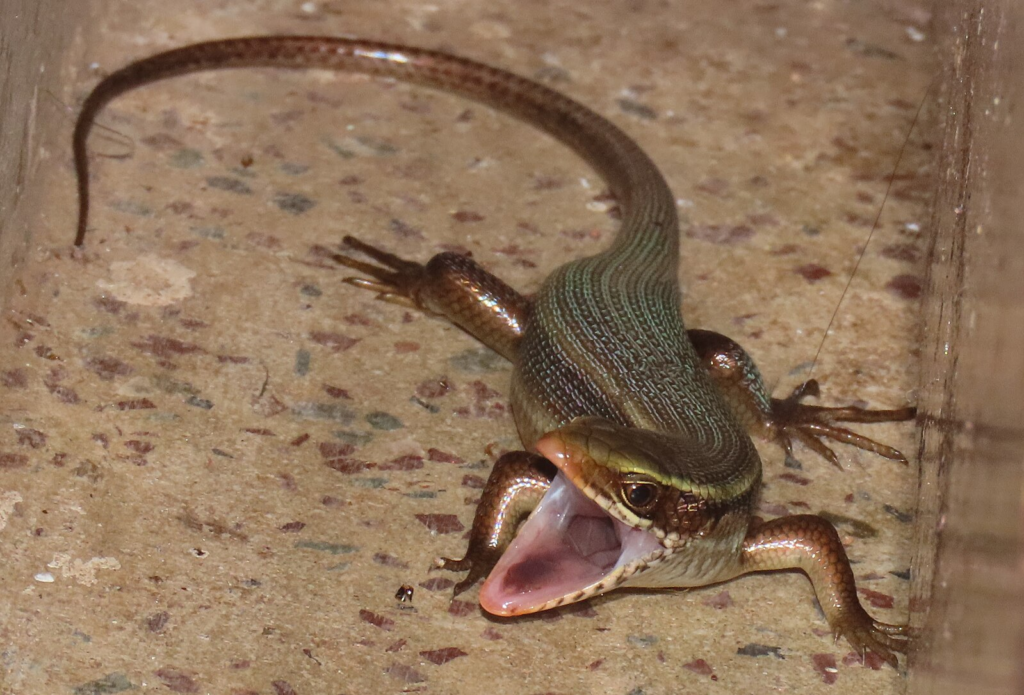
The Blue-tongued Skink (Tiliqua spp.) introduces an element of surprise to lizard beauty, with its relatively plain exterior concealing its most striking feature—a vibrant cobalt-blue tongue that contrasts dramatically with its orange-pink mouth. Native to Australia and parts of Indonesia, these robust lizards display beautiful banded patterns in earth tones that blend seamlessly with their habitat, but when threatened, they flatten their bodies, hiss loudly, and dramatically expose their blue tongues in a startling defensive display. Their scales have a polished, almost iridescent quality that catches the light, giving them a healthy sheen that enhances their earthy color palette of browns, oranges, and creams. Different species and subspecies display unique pattern variations, with the Northern Blue-tongued Skink often exhibiting striking bands and the Indonesian Blue-tongued Skink showing off spectacular orange, black, and cream patterns.
Marine Iguana: Volcanic Canvas
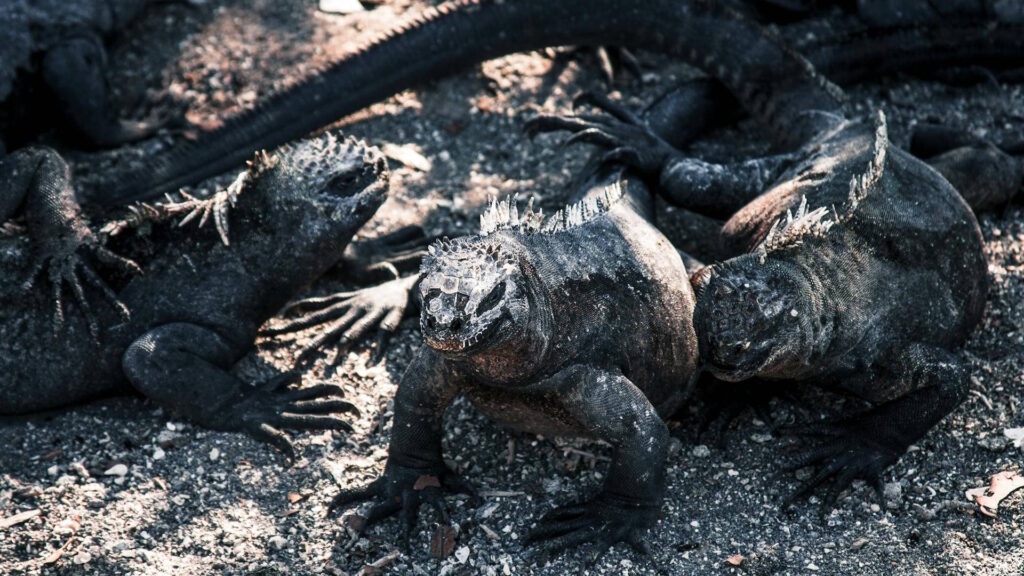
The Marine Iguana (Amblyrhynchus cristatus) of the Galápagos Islands presents a unique beauty that develops seasonally, with breeding males transforming from basic black to spectacular combinations of red, green, turquoise, and teal—colors that seem to echo both the volcanic landscape and the surrounding ocean. These remarkable lizards are the world’s only marine-feeding lizards, having evolved specialized glands that expel excess salt through their nostrils in a process that often leaves them with distinctive white “wigs” of crystallized salt on their heads. During breeding season, the most colorful males establish territories on the black lava rocks, creating living art installations where their vibrant bodies contrast dramatically with the dark volcanic landscape. Different island populations display subtle variations in pattern and coloration, with some colonies showing more red tones while others display more pronounced greens and teals.
Conservation Challenges: Protecting Living Art
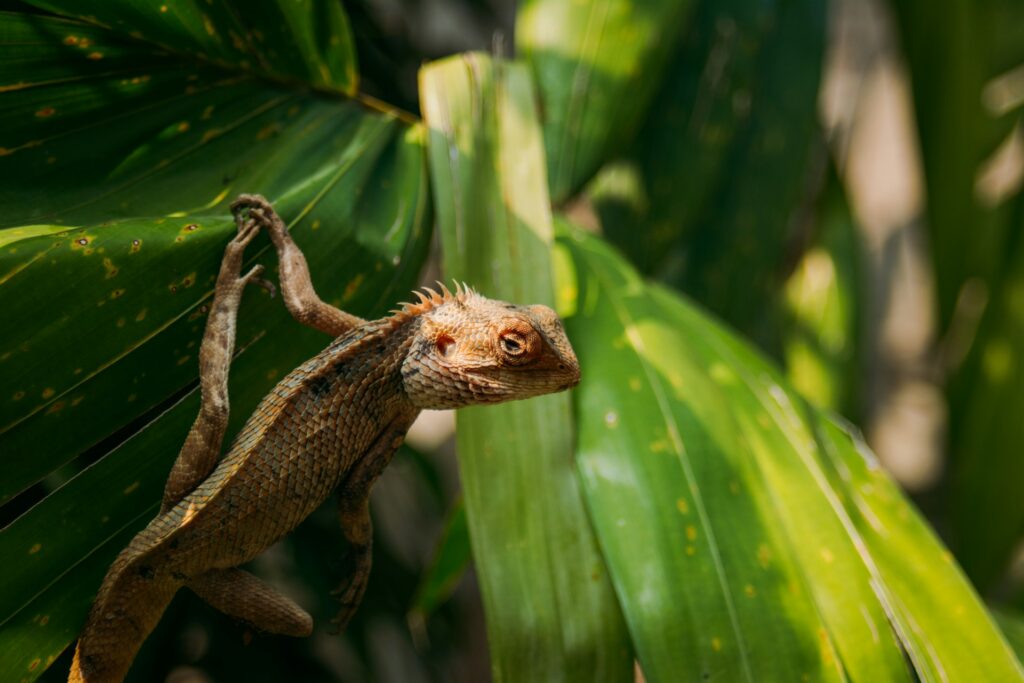
The very beauty that makes these lizards so remarkable often places them at grave risk, with many species facing significant threats from habitat destruction, climate change, and collection for the illegal pet trade. The Electric Blue Day Gecko, for example, has lost over 80% of its population in just 15 years due to unsustainable collection and forest fragmentation. Specialized habitat requirements make many beautiful lizard species particularly vulnerable to environmental changes, with creatures like the Marine Iguana facing new challenges as ocean temperatures rise and alter their food supplies. Conservation efforts for these living artworks require multi-faceted approaches, including habitat protection, breeding programs, and international trade regulations through CITES (Convention on International Trade in Endangered Species). Educational initiatives play a crucial role too, helping people understand that sustainable observation through ecotourism or responsible photography offers better long-term benefits than removing these creatures from their natural canvas.
Nature’s artistic genius shines brilliantly through these scaled wonders, each species representing millions of years of evolutionary refinement. From the high-flying aerobatics of the Flying Dragon to the masterful camouflage of the Satanic Leaf-tailed Gecko, these lizards remind us that beauty in the natural world is not merely decorative but functional—tied to survival, reproduction, and ecological relationships. As we continue to discover and document Earth’s biodiversity, these living artworks serve as ambassadors that connect people emotionally to the wild places they inhabit. By appreciating and protecting these magnificent creatures, we preserve not just individual species but entire ecosystems woven together through complex relationships. The most beautiful lizards in the world stand as testaments to nature’s creativity and resilience, deserving both our admiration and our commitment to ensuring they continue to adorn our planet for generations to come.


